Aerial application programs that have been found effective include:
Dormant sprays against overwintering pear psylla. When aircraft is equipped with standard boom and nozzles, apply at rate recommended for the registered compound plus 3 gallons of horticultural mineral oil in 7 or more gallons of spray per acre.
Codling moth. Materials recommended for codling moth control may be applied by aircraft, provided this type of application is permitted by label registration. See Pest Control Program for Apples.
Green apple aphid. Aerial sprays are effective against apple aphid and are especially useful against mid-season infestations. See label for preharvest interval.
Western cherry fruit fly. Malathion ULV applied through Beecomist dispensers at 1 pint per acre on a 7-day schedule has provided control of western cherry fruit fly when evenly applied across the entire orchard surface. Control may not be adequate when power lines, houses, or wind complicate application. Applications should be made through 20-micron sleeves. Northwest growers have reported marking on peaches and apricots receiving this misapplied spray.
Grasshoppers. Malathion ULV sprays are suggested for grasshopper control only in areas adjoining orchards. This treatment is not registered for use on any tree fruit except cherries. Use 1/2 to 3/4 pint of Malathion ULV per acre. Other materials may also be used by air.
Zinc nutrient sprays. Applications of zinc sulfate 1.2 LC have been made to apple, pear and cherries by aircraft in the spring during the dormant period. See section on Nutrient Sprays for rates and precautions.
Boron may be applied to the orchard soil (granular formulation) by aircraft during the dormant season to correct boron deficiency. Apply the equivalent of 3-5 pounds of actual boron per acre. See section on Nutrient Sprays.
Stop drop sprays. NAA may be applied by aircraft to prevent preharvest fruit drop. Use 5 or more gallons total spray per acre. See section on Growth Regulator Sprays.
Apple scab. While the use of aerial application is quite satisfactory for the control of apple scab when fungicides that may be re-distributed by rain are used in a protective program, its use for eradicant control poses a risk for disease development. The aerial label rate per acre for dodine (Syllit) is too low for good eradicant action. Coverage by aerial application may not be adequate for eradicant control.
For protective control of apple scab any of the organic fungicides listed under Apple scab in the Pest Control Program for apples will give satisfactory control when applied by air.
Preharvest sprays for bull’s eye rot. Ziram may be applied by aerial spray for the prevention of bull’s eye rot. Use in accordance with label directions. Research shows ground applications of these sprays are more effective.

